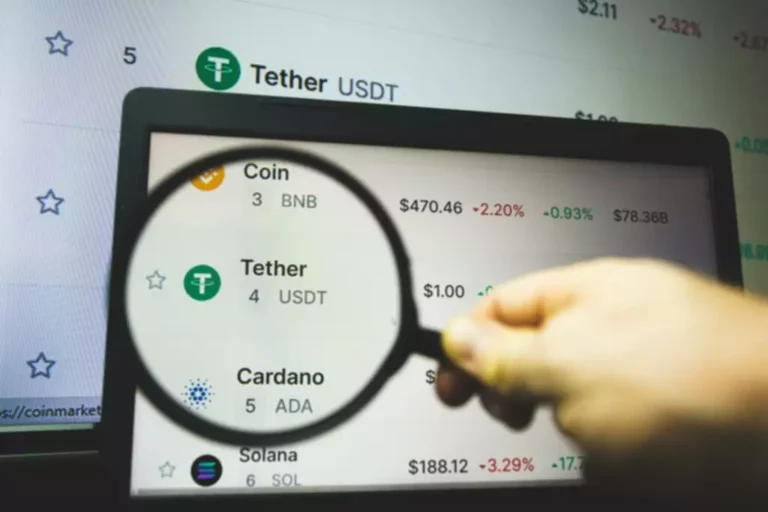Content
Your wallet will prompt you to enter the amount and may allow you to adjust transaction fees for faster processing. Centralized control also raises questions about the true backing of stablecoins. Users must trust the issuer to maintain adequate reserves, a concern highlighted by past controversies surrounding reserve transparency. Decentralized stablecoins aim to address these issues stablecoin payment for business but face their own challenges in maintaining stability and scalability without centralized control. Stablecoins operate in a complex regulatory landscape, with frameworks varying widely across jurisdictions. Many countries lack clear guidelines for stablecoin issuance, trading and use, creating legal uncertainties for users and issuers.
Integration and API Key Management
- Many gateways allow you to customize checkout experiences to match your branding.
- Stablecoins could be the solution to finally enable dollars to come out of the computer across Africa.
- Consider factors like fees, liquidity and supported payment methods when choosing an exchange.
- It makes transactions faster and smoother, giving customers a much better experience.
If you want to grow brand awareness or educate the market on your product, reach out to me for sponsorship at Stablecoins are becoming increasingly popular in gaming, enabling players to trade assets seamlessly https://www.xcritical.com/ within a decentralized blockchain network. Get exclusive updates and see how Charge can simplify your business with crypto payments – sign up now and stay ahead. When the stablecoin’s price deviates from its peg, the system triggers corrective measures. For example, if the price rises above the peg, new coins are minted and sold at the pegged price, increasing supply and lowering the market price.

Real-World Use Cases Of Stablecoins

For consumers, stablecoins provide a straightforward and reliable way to make payments without the need for a bank account or credit card, particularly in cross-border transactions. Stablecoins are a type Cryptocurrency exchange of digital currency designed to maintain a stable value while gaining the efficiency, mobility, and utility of blockchain-based digital assets. By accepting stablecoins across Ethereum and Layer 2 networks, businesses can reduce fees, speed up transaction times, and offer customers greater payment flexibility.
The Role of USDC and USDT in the Stablecoin Market
Think of them as digital dollars that can be transferred quickly and securely without the need for banks. With stable value and ease of integration, stablecoins are ideal for digital currency payments in online marketplaces. Merchants can buy and sell using stablecoins, reducing reliance on traditional payment gateways and lowering transaction costs.
One of the most significant advantages of stablecoin payments is the speed at which transactions can be completed. In today’s world, where traditional banking sometimes falls short, these perks are a big deal. Understanding these advantages can really open your eyes to the potential of stablecoins. Transactions happen super fast, which is a game-changer compared to traditional banking systems that can be slow, especially for cross-border payments. Stablecoins enhance user privacy and accelerate innovation in payment systems but cater to specific use cases rather than replacing traditional payment methods.
A stablecoin is a type of cryptocurrency with a value tied to a stable asset, such as the US dollar, to avoid the typical volatility seen in the crypto market. For example, if a stablecoin is pegged to the US dollar, one stablecoin will always be worth one dollar. The adoption of stablecoins in wholesale distribution and procurement can lead to more efficient operations, better financial management, and improved relationships between suppliers and retailers. Rapid Innovation assists clients in navigating this transformation, ensuring they harness the full potential of stablecoins to enhance their procurement strategies.
Cross-border transactions are another area where stablecoins have the potential to shine. Every retailer operating across multiple markets understands the cost and complexity of cross-border processing. Those issues diminish with the borderless nature of stablecoins, making it a tool that could truly unlock the power of the global digital economy. The concept of stablecoins dates back to 2014, with the launch of BitUSD on the BitShares blockchain. However, it was the introduction of Tether (USDT) later that year that brought stablecoins into the mainstream.
Additionally, stablecoins facilitate liquidity pools and trading pairs, further expanding the functionality and appeal of DeFi platforms. For instance, Shopify has integrated USDC payments, allowing merchants to receive stable cryptocurrency payments. This adoption extends the reach of online businesses to a global customer base, reducing currency conversion complexities. Stablecoins serve as a critical bridge between the traditional financial system and the cryptocurrency market.
Using multi-signature wallets and enabling two-factor authentication (2FA) can add additional layers of security. Offering exceptional support can make users more likely to switch to stablecoins. Customers receive a small percentage of their purchase amount back when they use stablecoins for payment. Display QR codes prominently on your website, print advertisements, or store signage to encourage customers to make payments using USDT or USDC.
Stablecoins are a type of digital currency that aims to maintain a stable value relative to a fiat currency, commodity, or other external asset. By combining the stability of fiat currencies with the efficiency of blockchain technology, stablecoins provide a reliable medium of exchange and a stable store of value. This unique combination has led to increased interest and adoption of stablecoins in the digital asset ecosystem. The adoption of stablecoins by major companies highlights their growing importance in the financial ecosystem.
These solutions ensure secure, real-time payments, reduce transaction costs, and simplify international trade, making stablecoins a game-changer for B2B transactions. By maintaining a stable value tied to reliable assets like the US dollar, stablecoins like USDC enable users to maintain the value of their savings relative to the US dollar. Stablecoins also serve as an entry point to global financial markets, enabling individuals to save, invest, and transact in a stable digital currency. This can be particularly transformative for communities that have limited access to traditional financial systems. BitPay, a leading cryptocurrency payment processor, supports stablecoin payments to provide merchants with a stable and reliable payment method. By accepting stablecoins like USDC and Dai (DAI), BitPay merchants can avoid the volatility risk of other cryptocurrencies while still benefiting from blockchain’s fast and secure transaction capabilities.
Stablecoins are blockchain-based tokens tied to a stable asset, typically the US dollar, to maintain a stable value. By addressing these considerations early, you can design a payment flow that is technically reliable and practical for your business. Taking the time to plan now will save effort, time, and costs in the long run. For payment professionals, understanding stablecoins’ role and their practical use cases is essential to staying relevant and competitive in today’s digital economy. However, cryptocurrency did not gain traction until 2009, when Bitcoin was launched. Stable cryptocurrency currencies appeared a few years later, in 2014, when the first successful stablecoin, Tether, was established.
Reliability is due to the complex messaging layer where a payment message can get lost between the webs of intermediary banks and the delays are also due to the nature of counterparties. SWIFT is especially useful for corporate transactions but becomes uneconomical for lower value transactions. These fees can add up to thousands of dollars a year for a busy HVAC business.
They achieve this by being pegged to a stable asset or a basket of assets, such as the US dollar, other fiat currencies, or even gold. This pegging mechanism helps to maintain a consistent value, in contrast to the often wild fluctuations seen in other cryptocurrencies like Bitcoin or Ethereum. This stability is crucial for businesses that need to manage financial risks and plan with certainty. Stablecoins play a central role in DeFi, serving as a critical building block for a wide range of dApps. They enable lending, borrowing, and yield farming by providing a stable and predictable medium of exchange.

